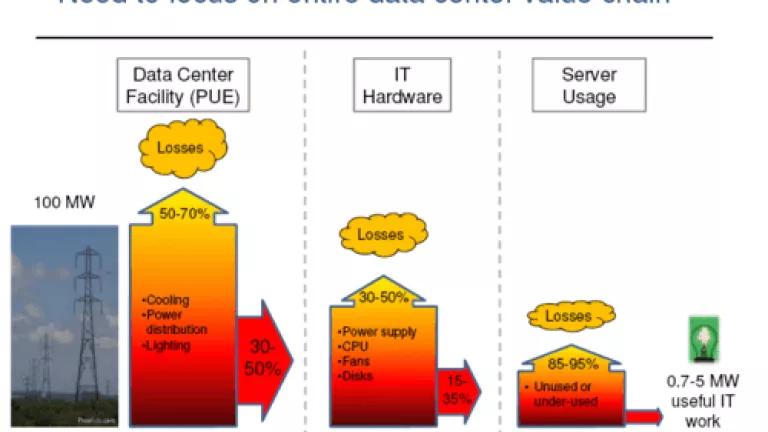
Anyone who knows me knows I’m tethered to my Blackberry.
That means that I’m also tethered, willingly or not, to a network of energy-hogging data centers. They’re the backbone of our information infrastructure—huge, warehouse-like buildings that house equally huge networks of computer servers. These computer servers, in turn, link us to the digital world—to the Internet, to email, to smartphones, my Blackberry included.
Often, with that buzzing, ringing contraption in hand, I’ve wished this energy-hogging situation were otherwise. After all, any industry that relies on electricity generated by burning fossil fuels endangers our health, our fragile atmosphere, and wastes a lot of hard-earned cash. Now, I’m pleased to report, a small-but-growing generation of forward-thinking data center owners and managers—like Cavern Technologies in Lenexa, Kansas—is making our digital connections, mine included, less taxing all around.
I mentioned already that data centers are notorious energy-hogs. Just how bad are they? Well, the largest data centers can draw as much electricity as a single power plant produces. (I’ve learned this from NRDC’s Pierre Delforge, an information-technology-industry veteran who helps us advise governments on energy-efficiency standards.) This year, more than 2 percent of all the electricity generated in the US will go toward powering data centers. That’s $12 billion worth. The pollution produced is that of a walloping 10 million cars.
If we don’t do anything to change that situation, over the next ten years we’ll double the ill-effects on our finances and on the natural world that supports us.
Our society’s love of all things digital doesn’t mean we have to waste money, endanger our children’s health and put our atmosphere in peril, however. In the data center world, there’s a huge energy-saving opportunity, which, unfortunately, is often left untapped.
The average data center gets only 0.7 to 5 megawatts worth of useful IT work out of every 100 megawatts of electricity. (Thanks to NRDC's Pierre Delforge for this slide, which explains the energy losses.)
In fact, for every 100 megawatts of electricity invested, the average data center reaps only 0.7 to 5 megawatts worth of useful IT work. That’s right: only 1 to 5 megawatts worth. “Can you imagine running a fleet of airplanes with only 5 percent of the seats filled?” Delforge asked when he explained this bewildering fact to me. “You would go bankrupt.” The data center industry business model, however, simply accommodates these inefficiencies, and all of us bear the costs.
Luckily, there’s a movement among pioneering companies like Cavern to reduce the energy use that undergirds our increasingly digitized world. The company, which develops, leases and operates data centers 15 miles southwest of Kansas City, has devised a novel way to cut electricity use by 20 percent: It locates its data centers underground.
Because computer servers run hot, most data centers rely heavily on air conditioning to make sure their servers don’t fritz out. But Cavern’s underground centers take advantage of the ambient 68-degree temperatures just below the earth’s surface. “We’re using cooling from the earth instead of expensive chillers and piping,” explains Cavern’s president, John Clune.
The company isn’t stopping there. “We’re thinking of taking things to the next level with an economizer,” Clune says. An economizer is a mechanical device that can reduce temperatures in data centers and other buildings simply by importing cool air from outside rather than relying on energy-chugging air conditioners. “That would get our efficiencies up to 60 or 80 percent,” Clune notes.
Even now, “our data center is less expensive to use because it has lower energy costs,” Clune notes. “And that makes us more competitive.” Which is good for Cavern’s business.
Indeed, “energy efficiency allows more resilience and flexibility in business,” explains Kathrin Winkler, a board member of The Green Grid, a global consortium of IT companies and professionals dedicated to efficiency in data centers and computer systems. “Companies that are agile have a much greater advantage.”
As will we all, I realize, with my Blackberry ringing, when we find ways to pursue our digitalized future without endangering the future itself.